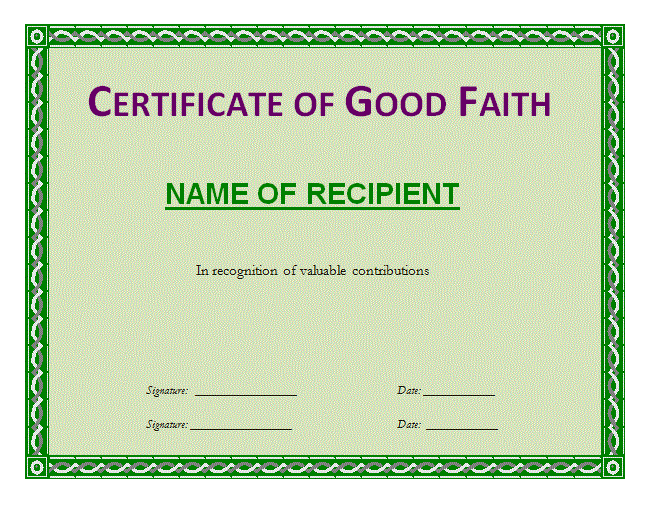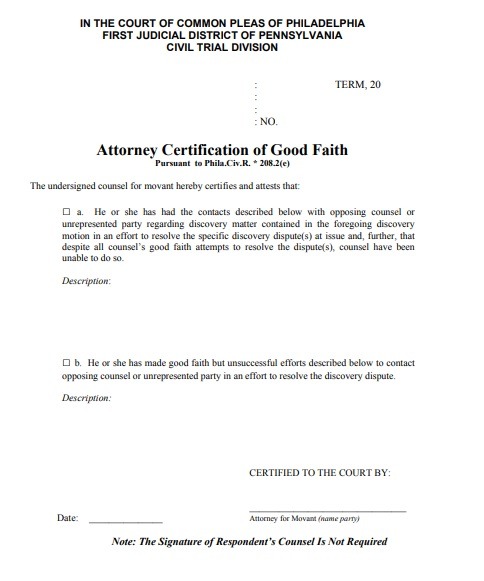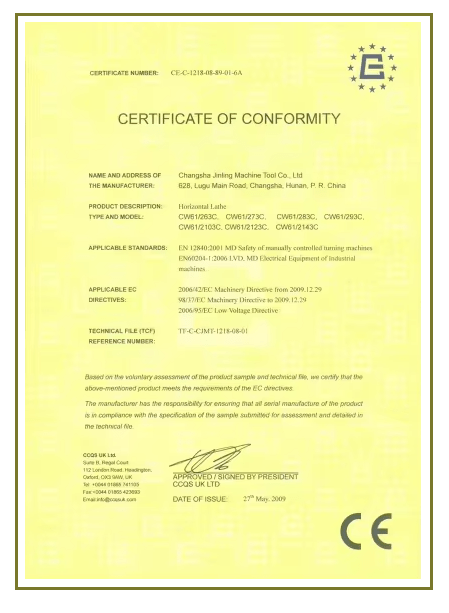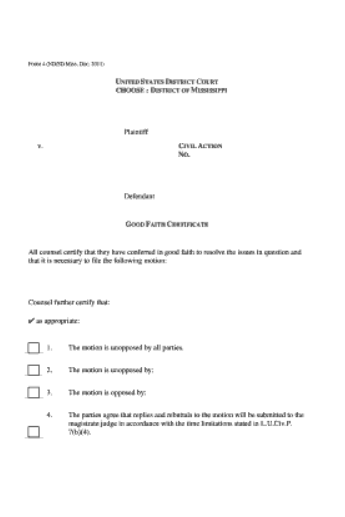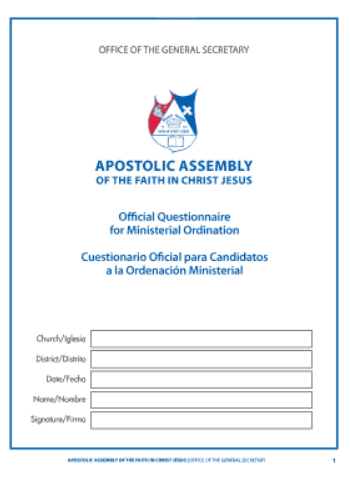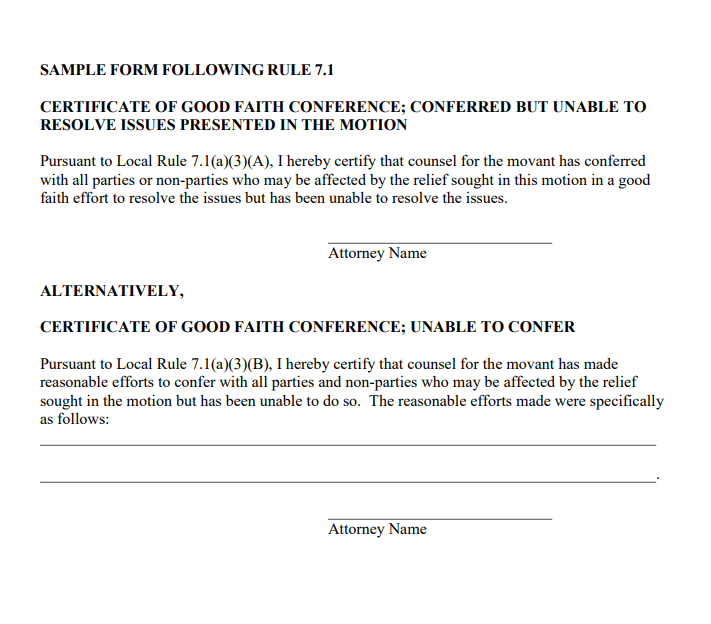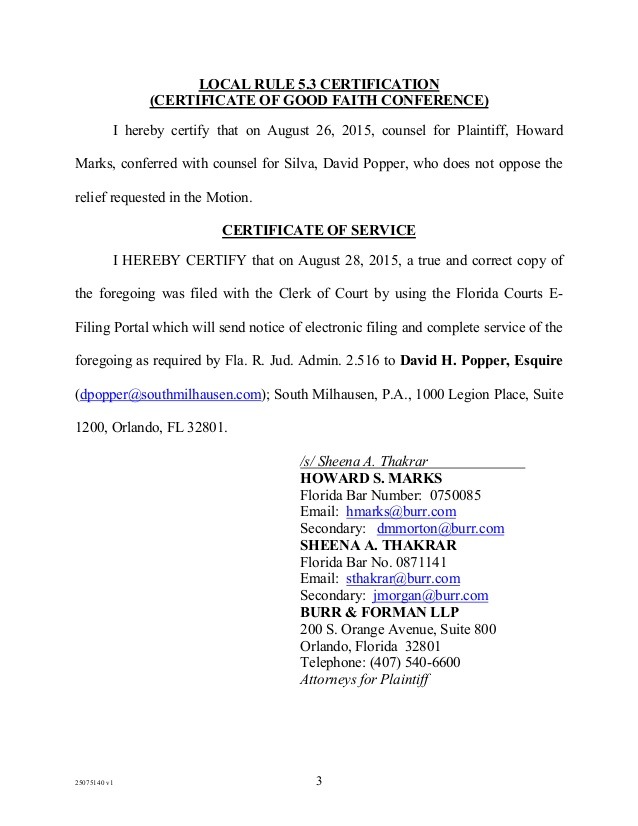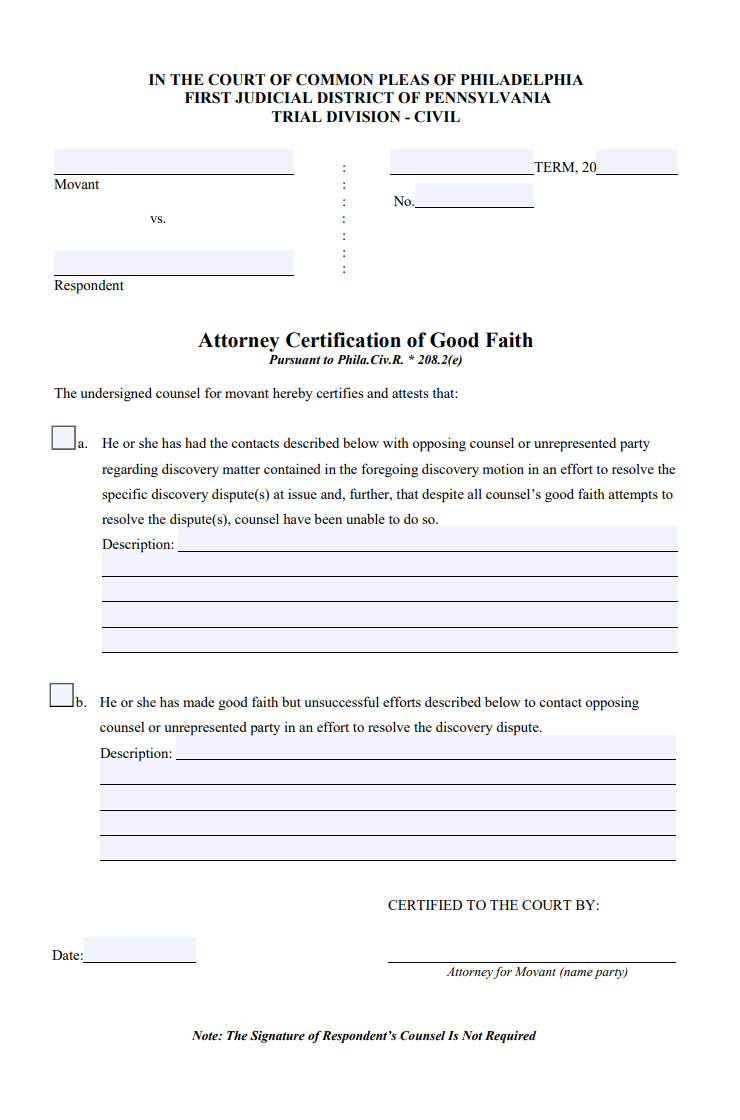Good faith certificate templates are legal formats which indicate the plaintiff has consulted an expert and the expert has agreed to give a written statement. These certificates are usually filed by a plaintiff’s attorney in a medical malpractice case. A certificate of good faith template is required for negligence against a health care provider. On the basis of the information available from the medical records concerning the care and treatment of the plaintiff for the incident, there is a good faith basis to maintain the action consistent with the requirements. A certificate of good faith, if not submitted, results in the dismissal of your medical malpractice claim by the court. A dismissal could prevent you from recovering financially from your injuries. Most importantly, a certificate of good faith is required when the plaintiff claims against the defendant. Once a defendant makes a motion to dismiss, the plaintiff must then show the court that they did in fact comply with the requirement to file a certificate of good faith.
Importance of Good Faith Certificate:
A certificate of good faith is issued on a good deed. It may be possible that this certificate will be issued by a life-saving doctor. This is because it is the only occupation in which your duty is to save people, live and show your good faith. The certificate of good faith shows that the person has a fear of God. Moreover, it was not made in good faith and no small issues were presented against a health care provider that fully cooperated in providing formal health care to the patient. It is not an ordinary certificate; to get this certificate, any miracle should be performed by you. Perhaps a good faith certificate in legal terminology refers to use when the question arises about honesty and best efforts in dealings with others. For instance, whenever an insurance company is set to make a deal, they give a certificate which presumably explains the policy statement of the company, although with clients it is considered as a contract type of certificate between an individual and an insurance carrier.
Details of Good Faith:
While it may be tempting, here’s one of the best things about a certificate of good faith: the ability to do things accurately through the good faith of people. Somehow, this certificate usually holds as evidence of a deal; in addition, good-faith certificates are necessarily meant as a promise. Undoubtedly, a good faith certificate is also called bona fides, because both words have the same meaning but occupy a minor difference; that’s why they are denoted separately. Going further, a good faith certificate is also recognized as a responsible document which extensively captions the belonging data about the recipient dealing with business as well as whole relevant data. In the end, we can say that a good faith certificate is construed as a parallel certificate in which all organizations, institutes, and an individual provide manganese promises of good faith which provide insurance for their work and property.
